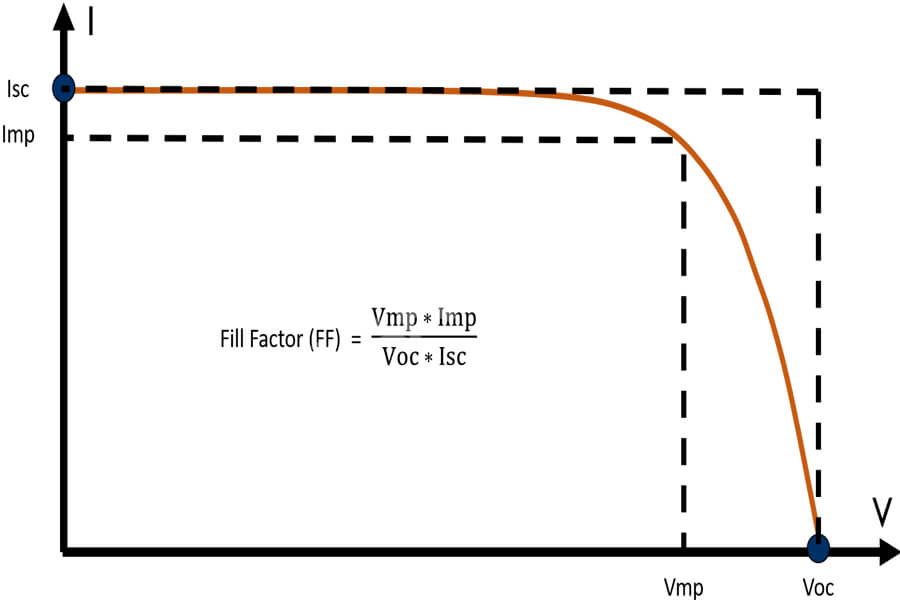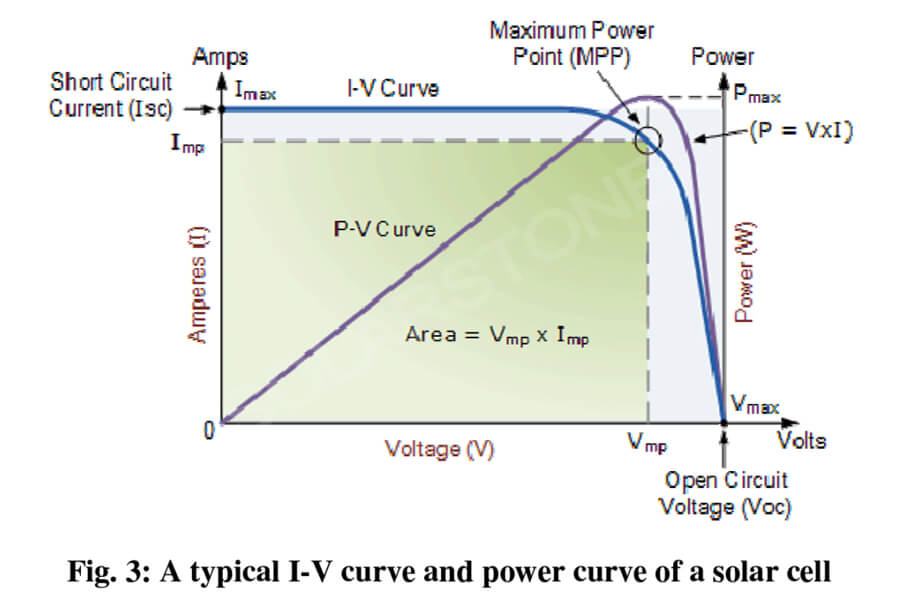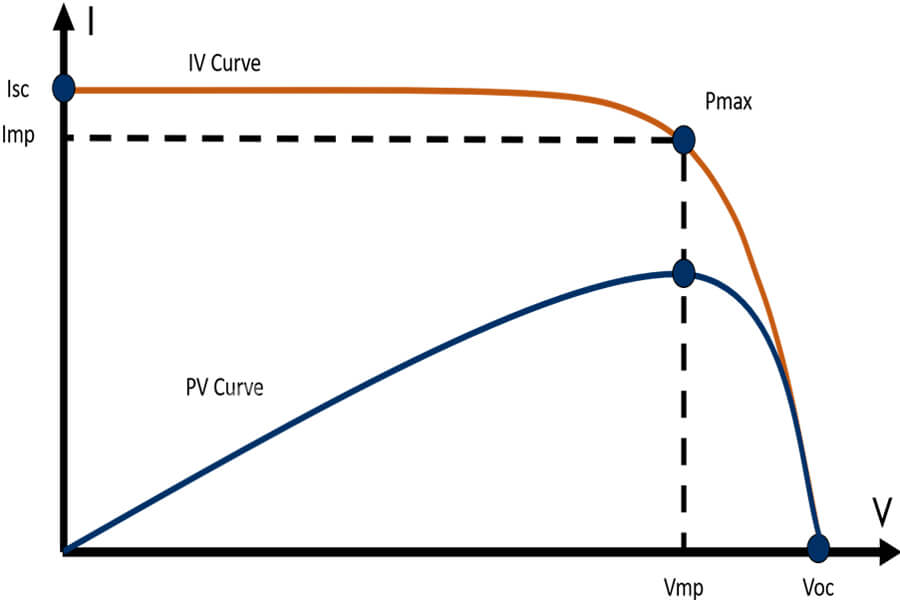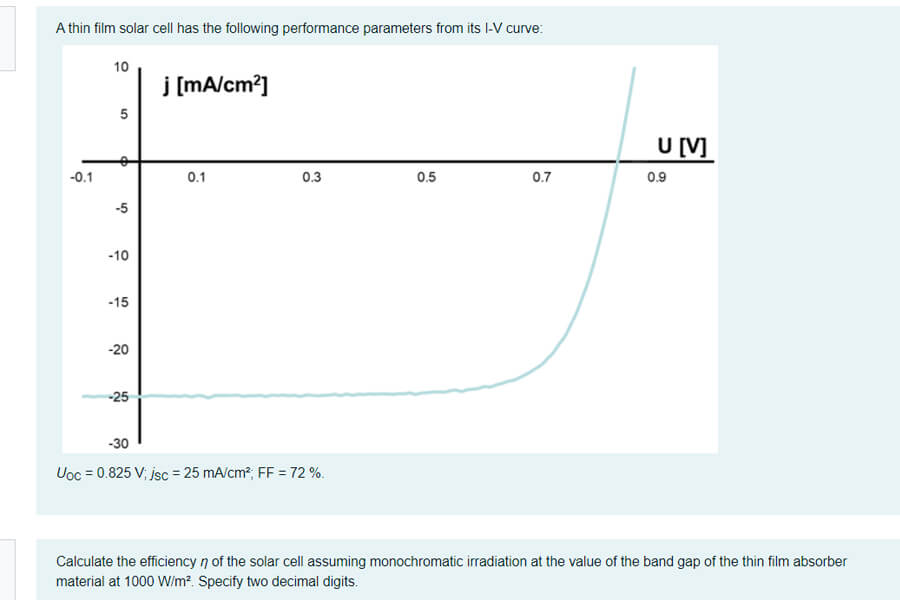The parameters of solar panels are provided by the manufacturer under STC (Standard Test Conditions). At STC, the corresponding solar radiation is 1000W/m2, the operating temperature of the battery is 25 ° C, and Am is 1.5.
The parameters of the solar panel are as follows:
ISC, short-circuit current. Short circuit current is the maximum current generated by a solar panel, measured in amperes (A) or milliamperes (mA).
The value of short circuit depends on the area of the solar panel, the solar radiation falling on the solar panel, battery technology, etc. Sometimes manufacturers provide current density rather than current value.
The current density is represented by “J”, and the short-circuit current density is represented by “JSC”. The relationship between them can be expressed using the following formula: JSC=ISC/A.
For example, a solar panel has a current density of 50mA/cm2 and an area of 300 cm2 at STC. So the short-circuit current can be determined as follows: ISC=JSC * area=50 * 300=15000mA=15A
VOC, open circuit voltage. Open circuit voltage is the maximum voltage that a solar panel can generate under open circuit conditions. Its measurement unit is volts (V) or millivolts (mV). The value of VOC depends on the solar panel technology and operating temperature.
PM, peak power. The measurement unit is usually W. The maximum power represents the maximum power that a solar panel can generate at STC. It is measured in Wpeak or simple WP. In addition to STC, solar panels also have PM at different irradiance and operating temperature values.
This solar panel can operate under different combinations of current and voltage. But it can only generate maximum power PM at a specific combination of voltage and current, which can be expressed by the following formula: PM=IM x VM.
Imp, the current at the maximum power point. It represents the current generated by the solar panel when operating at its maximum power point. Its value is always less than the short-circuit current (ISC). Its measurement unit is ampere (A) or milliampere (mA).
Vmp, the voltage at the maximum power point. It represents the voltage generated by the solar panel when operating at its maximum power point. Its measurement unit is volts (V) or millivolts (mV).
FF (%), filling factor, expressed as a percentage (%), the higher the filling factor, the better the battery. The fill factor is defined as the maximum power generated (during MPP) divided by the product of ISC and VOC.
We can see that the filling factor is always less than 1. Due to the difficulty of quickly measuring conversion efficiency, measurement of fill factor is usually used instead. Usually expressed by the following formula: FF=Pm/(Isc x Voc)
Efficiency, the efficiency of a solar panel is defined as the maximum output power (PM) divided by the input power (PIN). It is measured in percentage (%), indicating that this percentage of input solar power is converted into electrical energy. The input power is the power density. Efficiency can be calculated as follows:=PM/(PIN x Area)







